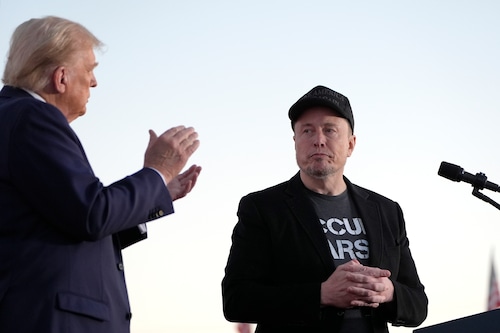By Joshua Goodman and Meg Kimmard, Associated Press
Using the organization that oversees the thousands of federal employee workplaces across the nation to reduce office space is one of the next steps in President Donald Trump and Elon Musk’s massive campaign to dismiss government workers and reduce operations.
According to an email obtained by The Associated Press by a GSA employee, regional managers for the General Services Administration, or GSA, received a directive from the agency’s Washington headquarters last week to start ending leases on all 7,500 federal offices around the country.
The decision appears to go against Trump’s own call for federal employees to return to the office, which further complicates the GSA’s already difficult task of locating workspace, internet connections, and office building security credentials for workers who had been working remotely for years.
The Trump administration’s view that it won’t require as many offices, however, may be reflected in its efforts to remove staff members or persuade them to retire.
Here are some facts about the GSA and how the Republican-led Trump administration is utilizing it to push for reforms at other government agencies:
What is the General Services Administration?
The GSA is an autonomous body that manages federal property for other agencies, essentially serving as the federal government’s real estate broker. The GSA was created by President Harry S. Truman in 1949 to streamline the administrative tasks of finding workspaces for federal employees, which had previously been managed by a number of organizations.
Initially, the GSA was charged with storing strategic supplies for use during times of conflict and getting rid of surplus items from World War II. These days, it organizes government purchases from private suppliers, supervises the preservation of hundreds of historic buildings, and acquires workspaces for over a million federal civilian employees.
According to the agency’s website, as of last fall, GSA owned and leased more than 363 million square feet of space in 8,397 buildings throughout more than 2,200 cities across the country. Courthouses, post offices, and data processing facilities are among those properties.
What does Trump want the GSA to do?
The GSA is the target of Musk and his Department of Government Efficiency.
Last Monday, regional managers received an email from GSA headquarters in Washington directing them to start ending leases on some 7,500 federal offices across the country.
According to an email from a senior GSA management dated January 29, which a GSA employee forwarded to the AP, lease terminations are currently the top priority.
According to the employee, who spoke on condition of anonymity out of concern for reprisals, GSA regional managers were informed in a follow-up meeting that the objective is to cancel up to 300 leases every day.
Who is leading Trump s moves concerning the GSA?
Nicole Hollander, who has been embedded in GSA’s headquarters in recent days, is spearheading the initiative, the employee told the AP.
Hollander identifies herself as an X employee in the Washington region with a real estate experience on her LinkedIn site. Hollander’s X account, which indicates that she joined in March 2015 but has postings dated only to September 2023, is filled with details regarding X’s real estate purchases and auctions of goods from Twitter’s previous premises following Musk’s acquisition of the company.
Since the president disapproves of less conventional architectural designs, Trump has directed the GSA to ensure that it supports stunning government civic architecture.
Has Trump had a dustup with the GSA before?
Indeed. Trump refused to sign a deal with the GSA that would have granted his team access to secure federal offices and email accounts during the transition period after his victory in November. The then-president-elect would have had to disclose who was funding his transition campaign and cap contributions at $5,000, which was one of the reasons for that rejection.
Trump and President Joe Biden’s White House did agree in late November, almost two months after the deadline, to let transition workers work with the current federal workforce prior to assuming office on January 20.
Goodman reported from Miami, while Kinnard reported from Houston.
More on Donald Trump

